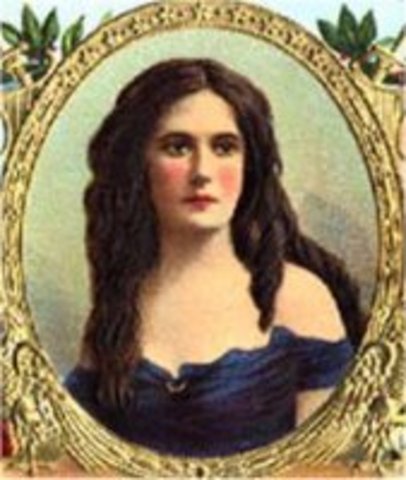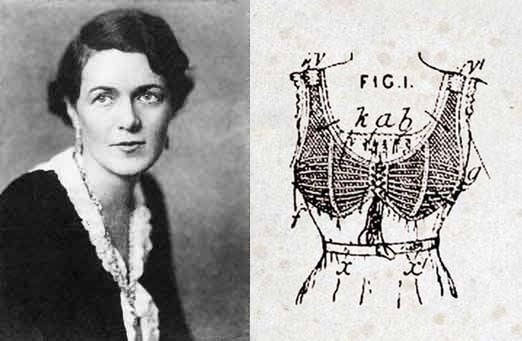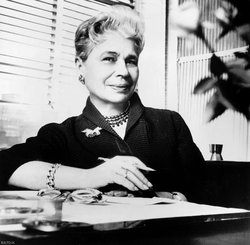The ancient Romans often used stale urine as mouthwash. The main ingredient in urine is ammonia which acts as a powerful cleaning agent.
Urine became so in demand that the emperor Nero taxed the trade. Urine remained a popular mouthwash ingredient until the 18th century.
May 30, 1939 -
John Ford's bio pix of President Abraham Lincoln, Young Mr. Lincoln starring Henry Fonda, Alice Brady, Marjorie Weaver, and Arleen Whelan, premiered in Springfield, Illinois on this date.
John Ford and producer Darryl F. Zanuck fought an extended battle over control of the film. Ford even had unused takes of the film destroyed so the studio could not insert them into the movie. One scene that Ford insisted on cutting was a scene where Lincoln met his future assassin, a very young John Wilkes Booth.
May 30, 1956 -
RKO Radio Pictures released Fritz Lang's late period film-noir classic, While The City Sleeps, starring Dana Andrews, Vincent Price and Ida Lupino (with whom you don't fuck with) on this date.
The sequence depicting the New York subway was actually filmed in the Pacific Electric Belmont trolley tunnel under downtown Los Angeles. Interurban streetcars doubled for the larger New York subway trains.
May 30, 1964 -
The Beatles first single, of their own material, Love Me Do, release in England in 1962, hit # 1 on the Billboard 100 in the US on this date.
The Beatles recorded versions of this song with three different drummers. At their first Parlophone audition in June 1962, Pete Best was still their drummer. When they recorded it on September 4, Ringo was their drummer, but when George Martin decided it would be the single, he had them record it again a week later.
At this session, he used a session drummer named Andy White and stuck Ringo with the tambourine. The version with Ringo drumming was released as the single, but the version released on the album had Andy White's drumming. Ringo didn't pitch a fit when he got bumped at the session, but was very upset and felt real insecure, especially since The Beatles had just fired a drummer.
May 30, 2003 -
The Academy Awarding Pixar Animation Studios and Walt Disney Pictures film, Finding Nemo, voiced by Albert Brooks, Ellen DeGeneres, Alexander Gould, and Willem Dafoe, premiered on this date.
Pixar developed a very realistic look of the surface water, but had to make it look more fake so people wouldn't think it was real footage of the ocean surface.
Another book from the backshelf of the ACME Library
Today in History:
May 30, 1431 -
Convicted of heresy by the English (see May 23), 19-year-old Joan of Arc got an extreme hot foot as her punishment in Rouen, France, on this date.
Pope Benedict XV canonized her in 1920.
May 30, 1593 -
Noted English dramatist, spy and buggerer (a famed pastime of English and Irish playwrights), Christopher Marlowe was either:
a: murdered in a tavern brawl on this date, or,
b: faked his death and assumed a new identity as William Shakespeare, noted English dramatist, spy and buggerer.
May 30, 1806 -
Andrew Jackson couldn't wait to marry his wife, Rachel Donelson Robards.
He was so impatient that he had married her before she could obtain a legal divorce from her first husband, Captain Lewis Robards - so technically she was a bigamist and an adulteress. His political opponents made much of this fact. Dueling over a horse racing wager and his wife's honor, the future President took a bullet in the chest from fellow lawyer Charles Dickinson on this date in 1806.
The slug shatters two ribs and buries itself near his heart. Then it was Jackson's turn to fire; his shot managed to sever an artery, technically breaking the rules of the duel. Dickinson died a few hours later, the only man Jackson ever killed in any of his 103 duels.
The bullet that struck Jackson was so close to his heart that it could never be safely removed. Jackson had been wounded so frequently in duels over his wife's honor that it was said he "rattled like a bag of marbles". At times he would cough up blood, and he experienced considerable pain from his wounds for the rest of his life.
I suppose that's what love was like in the 19th Century.
On May 30, 1889, the world’s 'first bra' was invented.
Breasts are an important feature among mammals. They allow mothers to nurture their young through protracted infancies. No infancy is longer than that of the human species, especially that of the American male, which often lasts until death.
Breasts are more than just moving diner for the young, however. On humans at least, they also have valuable recreational value. Nothing else has the nutrition, entertainment, and sheer jiggle value of the human breast (although Jell-O™ does come close).
Naturally, men couldn't leave anything with the power, appeal, and nutritive value of breasts in the hands of women, literally or metaphorically. From the very dawn of human history, therefore, breasts have been in men's hands.
In 2500 BC, the Minoan women of Crete were believed to have worn a special garment that lifted their breasts entirely out of their clothing. (Like another popular story of ancient Minos, this is believed to be half bull.) By the rise of the Hellenic (Greek) and Roman (Roman) civilizations, however, women were wearing tightly bound breast bands to reduce their busts. This style persisted until 476 AD, rightly referred to by historians as the Fall of Rome.
As history progressed, the popularity of breasts rose and fell, heaved and plunged, lifted and separated. Each new culture found a new way of exalting or obscuring the breast, according to their inclinations. By the nineteenth century in Europe, breasts were being pressed together and thrust upward by means of whalebone-fortified corsets. The strain was unbearable. Something had to give.
On May 30, 1889, the world’s first bra was invented. To tell you the truth, I’ve lost all track of where I found that date but I do know, however, that corset maker Herminie Cadolle invented the Bien-être in 1889, and that this “health aid” was the first garment to support breasts from the shoulder down instead of squeezing them up from below.
Marie Tucek patented the first “breast supporter” in 1893 (separate pockets for the breasts, with straps that went over the shoulder and were fastened by hook-and-eye closures). Yes, the first documented over the shoulder boulder holder.
New York socialite Mary Jacob Phelps invented a modern bra in 1914 (with two handkerchiefs, some ribbon, and a bit of cord) to accommodate a sheer evening gown. Ms. Phelps sold her invention, which she called the brassiere, to the Warner Brothers Corset Company in Bridgeport, Connecticut, for $1,500 in 1914.
The US War Industries Board encouraged the assimilation of the bra in 1917 by encouraging women to stop buying corsets, thereby freeing up nearly 60 million pounds of the metal used in them. (That was a lot of girded loins.) During the 1920s, a Russian immigrant by the name of Ida Rosenthal founded Maidenform with her husband William. The Rosenthals grouped breasts into cup sizes and developed bras for women of every age.
So it doesn’t really matter what happened on May 30, 1889. It only matters that I’ve gotten you to read the word breast about twenty times in the last several paragraphs.
Now you know.
May 30, 1896 -
The first car accident in the United States happened in New York City on this date.
Henry Wells from Springfield, Massachusetts was out joy riding his Duryea Motor Wagon, careening along the streets at 18 mph, when he collided with with a bicycle ridden by Evylyn Thomas, New York native. She was brought to Manhattan Hospital with a broken leg.
May 30, 1908 -
Melvin Jerome Blanc, the prolific American voice actor, performing on radio, in television commercials, and most famously, in hundreds of cartoon shorts for Warner Bros. and Hanna-Barbera during the Golden Age of American animation, was born on this date.
He is often regarded as one of the most gifted and influential persons in his field, providing the definitive voices for iconic characters such as Bugs Bunny, Daffy Duck, Porky Pig and Barney Rubble among hundreds of others. His talents earned him the nickname, The Man of a Thousand Voices. When he died he had "That's All Folks" inscribed on his tombstone.
May 30, 1922 -
The Lincoln Memorial was dedicated on this date.
The Memorial walls feature a typo. The north wall of the monument building features an inscription of Abraham Lincoln’s second inaugural address, a speech originally delivered in March 1865 at the tail end of the Civil War. Lincoln’s memorable incantation, “With high hope for the future, no prediction in regard to it is ventured,” concludes the first paragraph of the inscription, though with a minor error: The word “FUTURE” is misspelled as “EUTURE,” a blunder that remains visible despite attempts to correct it.
May 30, 1966 -
Surveyor 1, the first US spacecraft to land on an extraterrestrial body (the Moon), was launched from Cape Canaveral, on this date.
The hovercraft successful soft landed in the Ocean of Storms on the Moon on June 2, 1966. Surveyor 1 transmitted 11,237 still photos of the lunar surface to the Earth by using a television camera and a sophisticated radio-telemetry system.
May 30, 1989 -
Chinese students erected a giant statue called "The Goddess of Democracy" in Tiananmen Square on this date.
The statue was put up as part of the ongoing student protests in Tiananmen Square, and was brought down by tanks just five days later.
(Once again, I'm not winning any fans in China.)
And so it goes.







1 comment:
a lot of girded loins indeed
Post a Comment